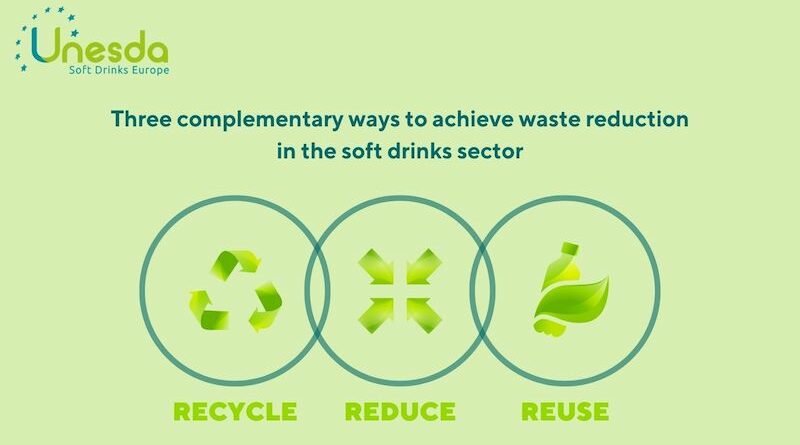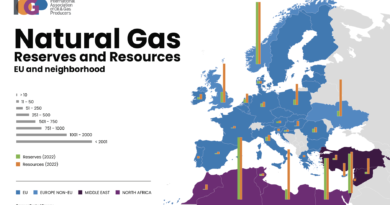
Target packaging waste, not packaging circularity
We are just a couple of weeks away from the publication by the European Commission of one of the most important pieces of EU legislation for all sectors that use packaging: the revision of the EU Packaging and Packaging Waste Directive (PPWD). This review aims at ensuring that “all packaging on the EU market is reusable or recyclable in an economically viable way by 2030”.
The European soft drinks industry, for which packaging circularity is a priority, has high expectations for the new PPWD. We have indeed always seen it as an opportunity to create the supportive policy enablers that will help us accelerate the transition to fully circular beverage packaging. However, the truth is that many in the packaging value chain have deep concerns about several aspects that the European Commission is currently considering. In particular, we are worried about ideas that would force the beverage sector to shift almost entirely towards reusable beverage packaging. Such a disproportionate approach will have huge consequences and doubtful environmental benefits.
What do we need to make our packaging fully circular? Policy coherence and supportive measures
The EU has ambitious goals to prevent packaging waste and our sector is fully supportive of those ambitions. We are committed to improving the sustainability of our beverage packaging and we have made far-reaching commitments to make our packaging fully circular by 2030. Nevertheless, those commitments are only attainable with the right policy enablers and the revision of the EU PPWD is the perfect opportunity to create a supportive legislative framework.
Let’s talk about reuse, a major point of concern for us in the proposal for a revised EU PPWD.
We aim to achieve fully recyclable beverage packaging by 2025, to reach at least 90% collection of all our beverage packaging and to use PET bottles made of 100% recycled and/or renewable material by 2030.
We have already made huge investments in recyclability, recycling and the incorporation of recycled content in our packaging: we have established Deposit Refund Systems (DRSs) in several EU countries to get our bottles back and promote closed-loop recycling, and many UNESDA members are already using 100% recycled PET (rPET).
These ongoing actions and investments will ensure that by 2030 our beverage packaging will no longer be waste but a resource: it will be fully recyclable, highly collected and will use high levels of recycled content. With these efforts, we are responding to the direction of travel that the European Commission has set in the Single Use Plastics Directive (SUPD) and the revision of the EU PPWD, with the introduction of mandatory collection and recycled content targets for beverage packaging.
But we will not stop there and we also aim at increasing our offer of reusable beverage systems because we believe that reducing, recycling and reusing go hand-in-hand when you want to reach full packaging circularity.
This is why setting disproportionately high reuse targets on our sector lacks policy coherence. It would force us to give up fully circular packaging to shift almost all investments to a completely different model.
It is also incomprehensible that indications from the proposals from the European Commission may only focus on setting reuse targets for some segments of the beverage industry, including the soft drinks sector, and not for a wider group of sectors. This is discriminatory and disregards all circularity efforts already made in beverage packaging. To ensure a level playing field and truly maximise the potential of reuse, targets should apply to all packaging that is not fully recyclable, not properly collected and does not use recycled content.
What’s wrong with over-ambitious reuse targets for beverage packaging
Disproportionately high reuse targets are unnecessary to achieve our goal of reducing waste. They will freeze investments in recycling and dismantle a number of highly effective, existing recycling systems at a time when our highly circular packaging is already playing a critical role towards improving resource efficiency and accelerating the transition to a circular economy in Europe. Why should we disregard this successful circularity path and move towards a completely new business model (reuse) that will have huge economic impact and doubtful environmental outcomes?
Definitely, reuse should be part of the solution to reduce packaging waste but we question the proposals to make reuse the only solution. We should look at reducing, recycling and reusing packaging as the three complementary pillars of circularity for beverage packaging because they are not mutually exclusive.
Furthermore, over-ambitious reuse targets may also result in a negative environmental impact if not introduced under the right conditions. According to a PwC report commissioned by our sector, focusing on a market share of 20% reusable PET bottles by 2030 at EU level, reusable beverage packaging has additional environmental costs compared to single-use recyclable packaging. This is due to increased utility consumption from operating additional machinery and washing bottles, and higher fuel consumption from increased logistical complexity: a complete new set-up is required for returning empty bottles and crates from the retailer back to the original bottler, rather than collecting shredded plastic for recycling. Reasonable and flexible targets are needed to ensure reusable systems are only set up when and where it makes more sense for our environment than their recyclable counterpart.
Last but not least, switching to reusable beverage systems will result in huge costs for the beverage industry and its packaging value chain. It indeed requires significant investments in new bottling lines, new machinery, new crates, more storage space, return logistics, etc. The same PwC report demonstrates that moving towards a market share of 20% reusable PET bottles by 2030 at EU level would equal a cost of almost €19bn – and this only concerns the soft drinks sector.
Don’t compromise the future of circular beverage packaging
It is crucial to do the revision of the EU PPWD right. We cannot afford wasting this opportunity to create an enabling legal framework that will accelerate the transition to a circular economy for beverage packaging.
We therefore propose a more realistic and manageable integration of reuse when and where it makes sense:
· Any reuse target should be based on a thorough environmental and cost impact assessment to ensure that reusable beverage systems are only put in place where they make the most sense for our environment and are cost-efficient.
· The reuse measures should be set at the European level and through a sectoral approach rather than being set on each individual economic operator. Such an approach will allow each sector with the greatest potential for reuse to direct the investments where they make the most sense. It will also avoid a patchwork of national reuse measures, creating a fragmented market.
· All sectors, and not just the beverage industry, where the increased use of reusable packaging is feasible and would bring net environmental benefits, should be treated equally. They should be encouraged and incentivized to increase their use of reusable packaging in order to shift consumer collective behaviour and increase the positive effects of the measures taken.
· The reuse measures should take into account the full scope of reusable beverage solutions, including refill at home solutions, and promote innovation in the field of waste reduction by adopting a wide definition of reusable beverage systems.
We stand ready to continuing our cooperation with EU regulators to ensure that we build the right future for circular beverage packaging.




